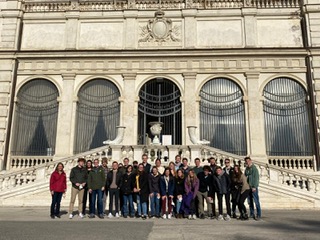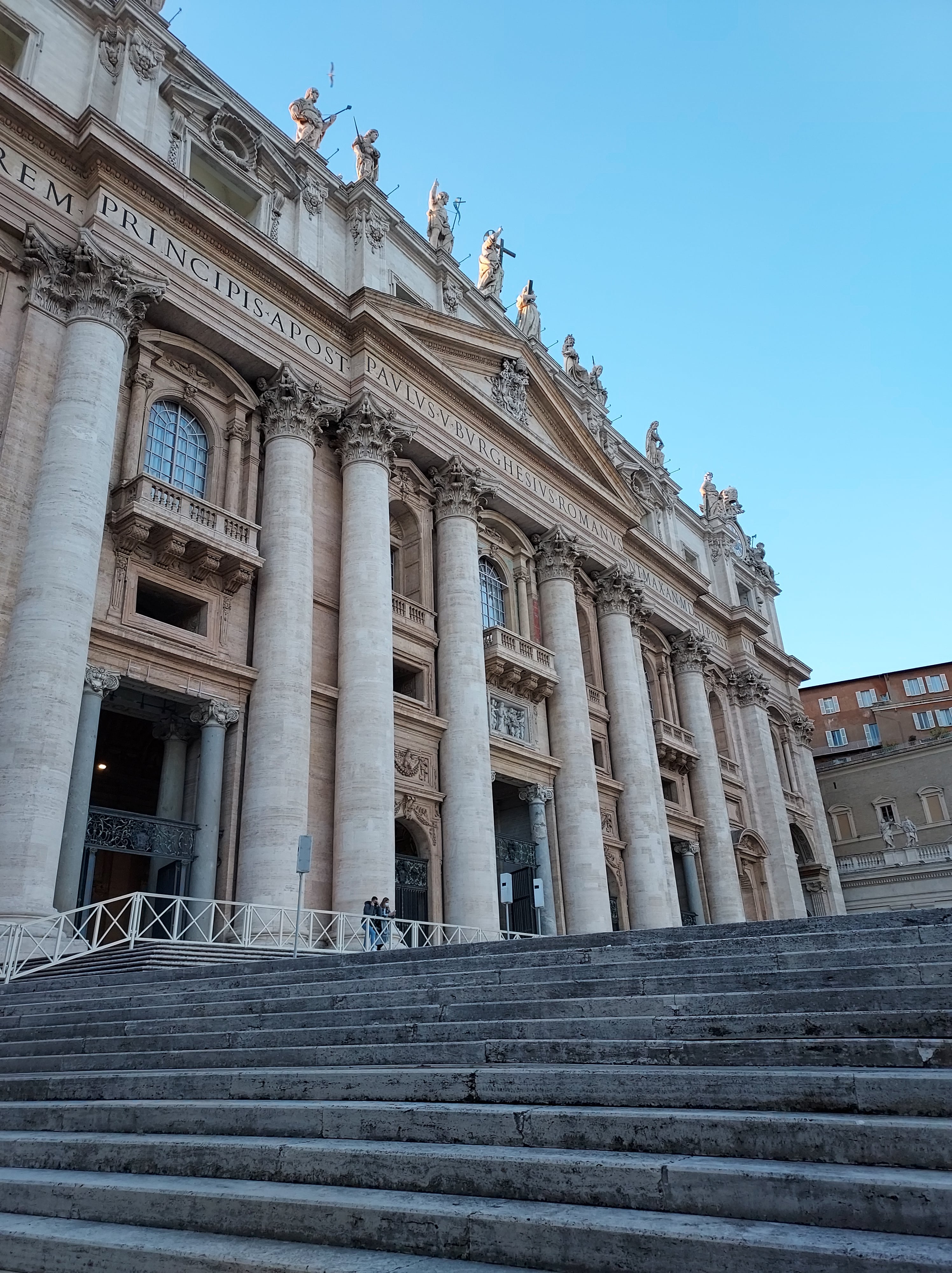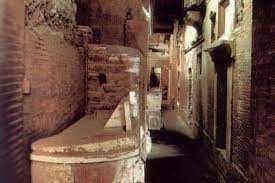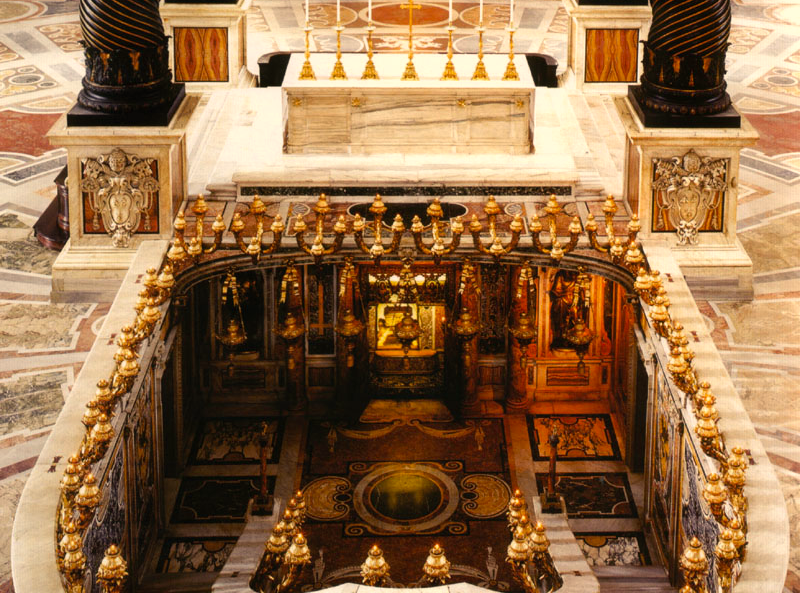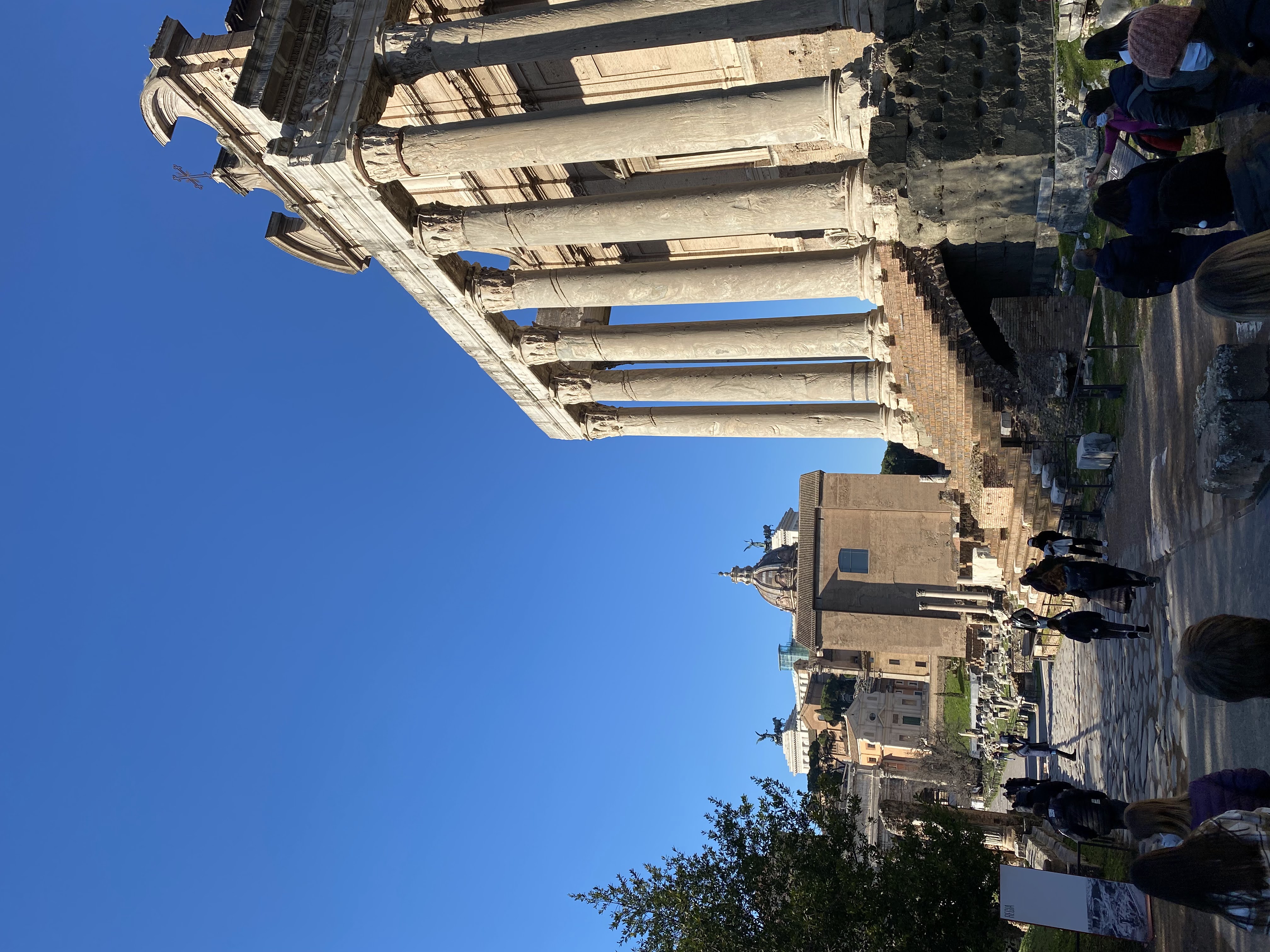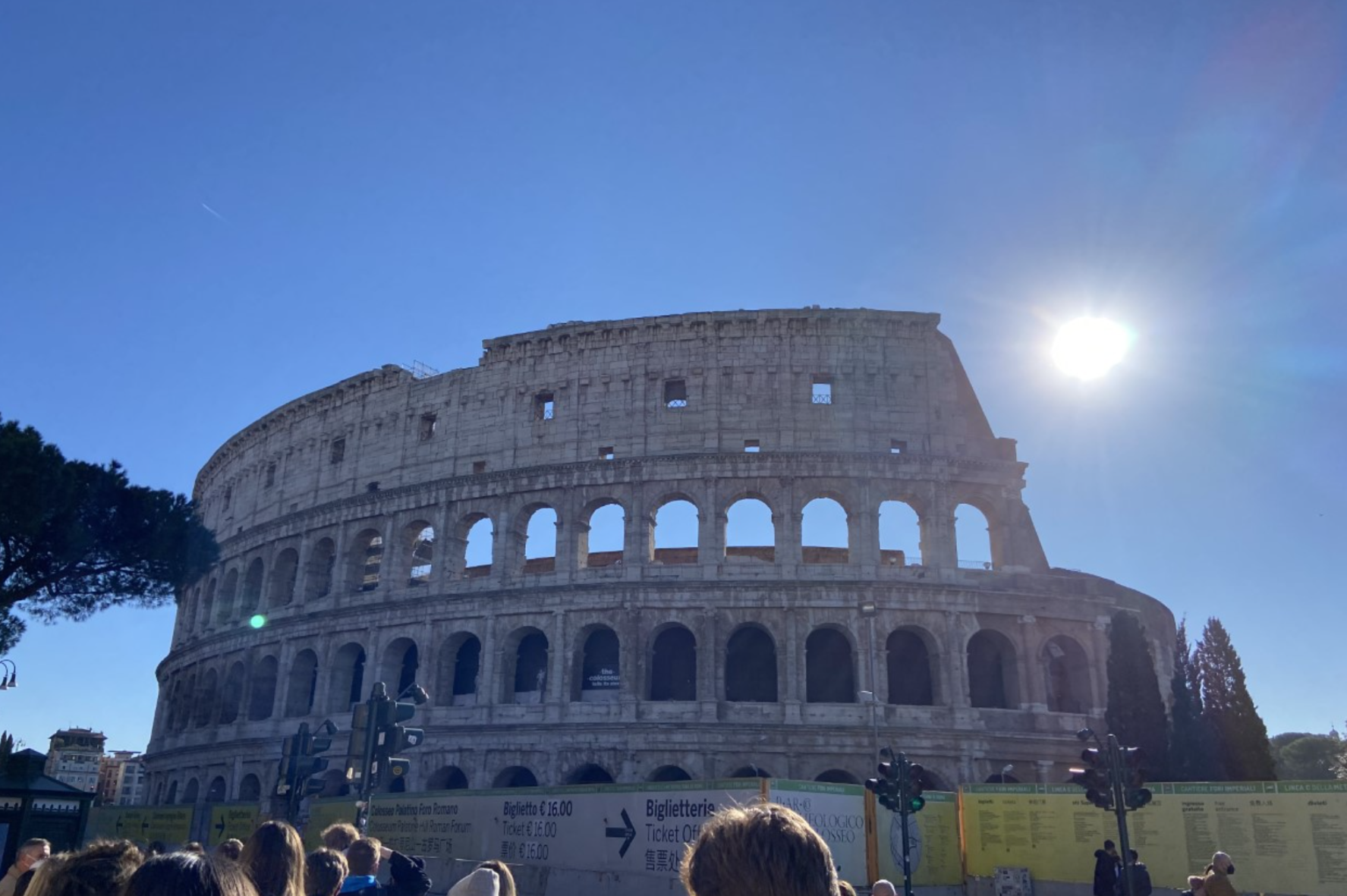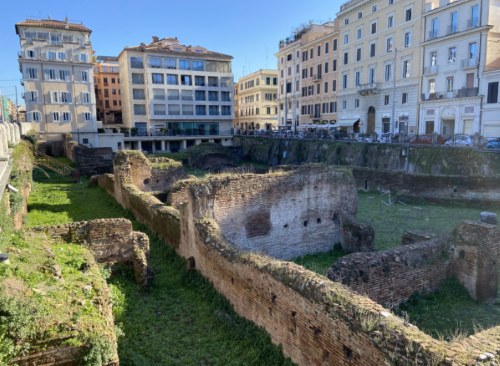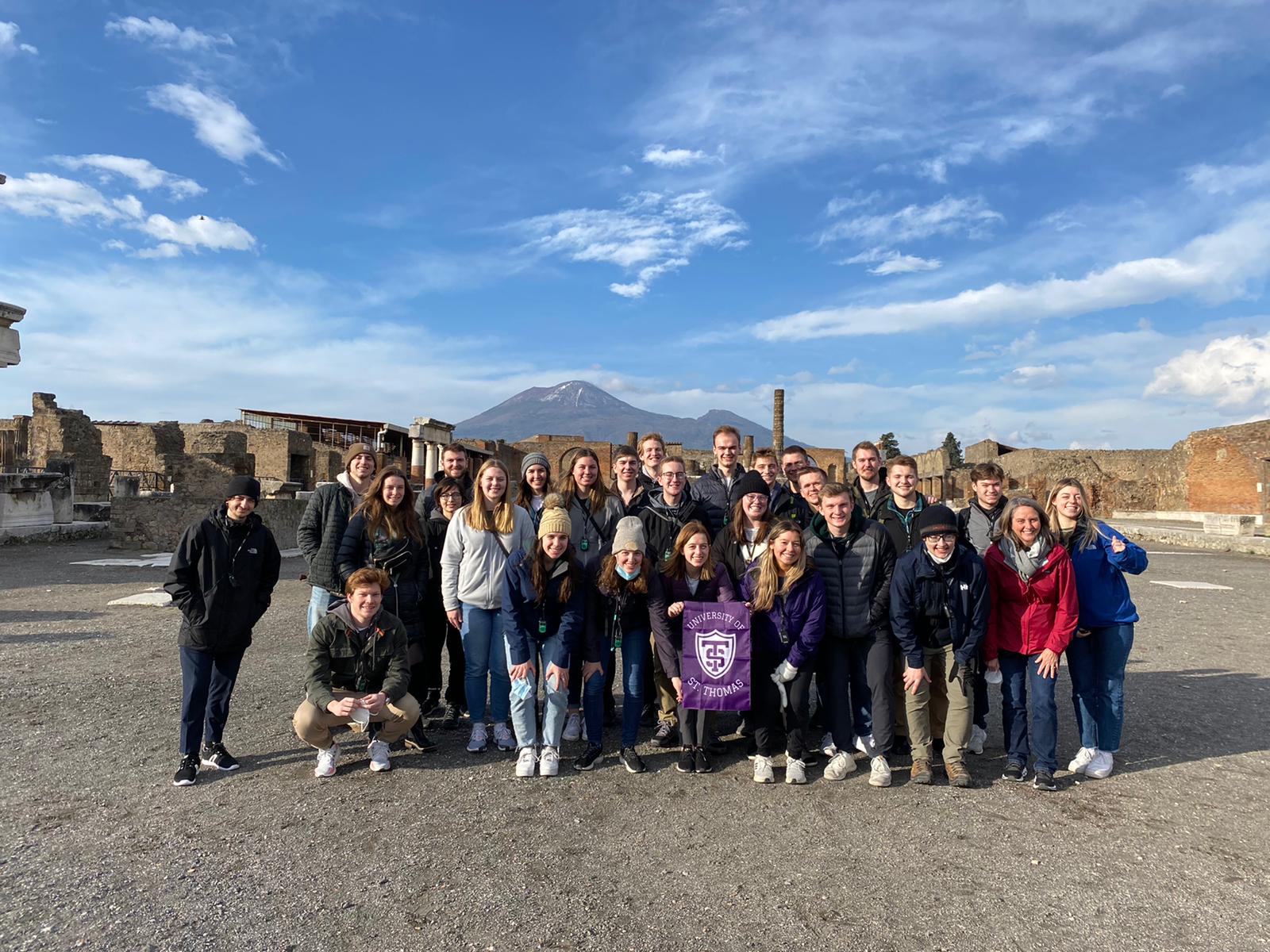Ellie Nodland – Senior Civil Engineer
Returning to our normal 9 AM class time today there were some Cappuccino breaks throughout the day’s activities. After the morning class session, we set off to take the metro bus together to the Borghese Gallery. I am sure the locals on their morning commute were surprised to see all 26 of us students, Dr. Besser, and two guides load onto the bus at once – it was a tight squeeze! Arriving at what was once Casino Borghese we were met with the sight of the greatest amount of green grass I think any of us have yet to see in Rome. After checking our bags, we entered the gallery in two groups with English-speaking guides to explain the history and significance of some key pieces of the collection.
The Borghese Gallery was once a private collection of the prominent Borghese family started by Scipione Caffarelli Borghese, the cardinal nephew of Pope Paul V. When the cardinal past, it was in his will that the collection must be kept together which is why in 1902 the complete collection along with the estate was able to be sold to the Italian Government for public use. My favorite pieces we saw in the gallery today were sculptures done by Gian Lorenzo Bernini. The display of both movement and emotion in Bernini’s sculpted Rape of Proserpine and Apollo and Daphne were stunning along with their respective Roman mythological stories.
Following the hour-and-a-half gallery tour (the perfect length for many of us students!) The scheduled daily activities were completed, and we split into groups to grab some food. Around 9 of us joined Dr. Besser for sandwiches (and some more cappuccinos!) at a café within the Borghese park. The café we stopped at happened to be near a small pond on the property were there were paddle boat rentals, and we could not resist. For twenty minutes, in two boats, we paddled and laughed around the pond struggling to navigate the water with the large wooden ores.
Looking forward to another fun day of adventures tomorrow!



